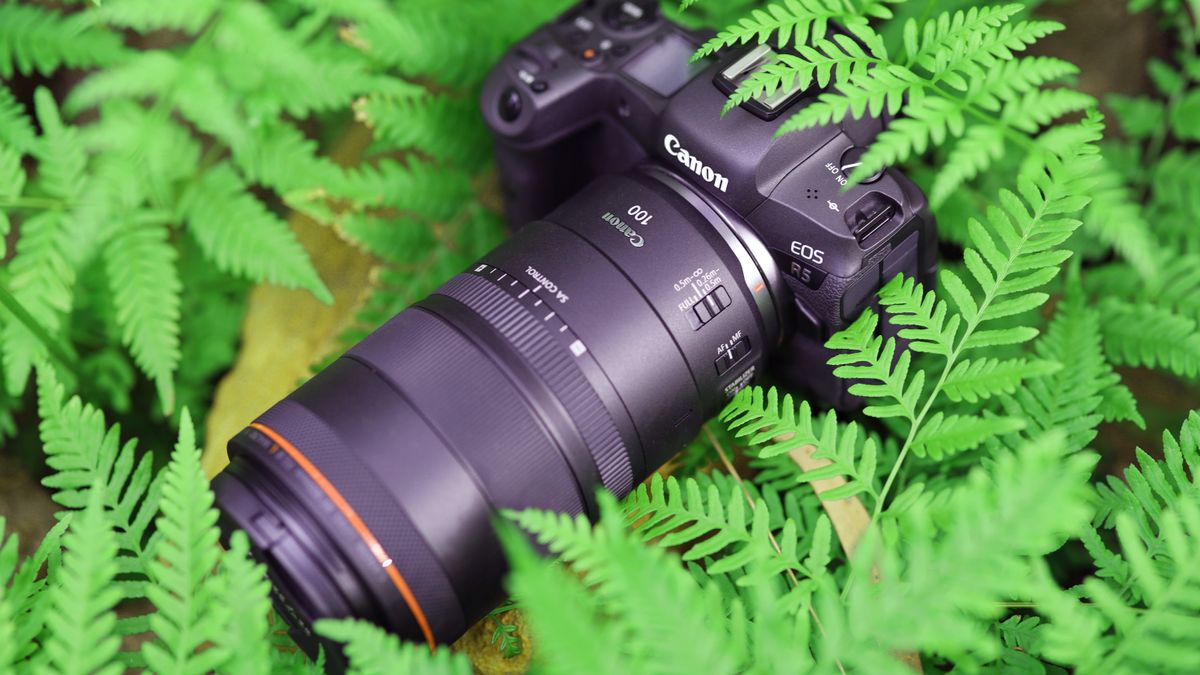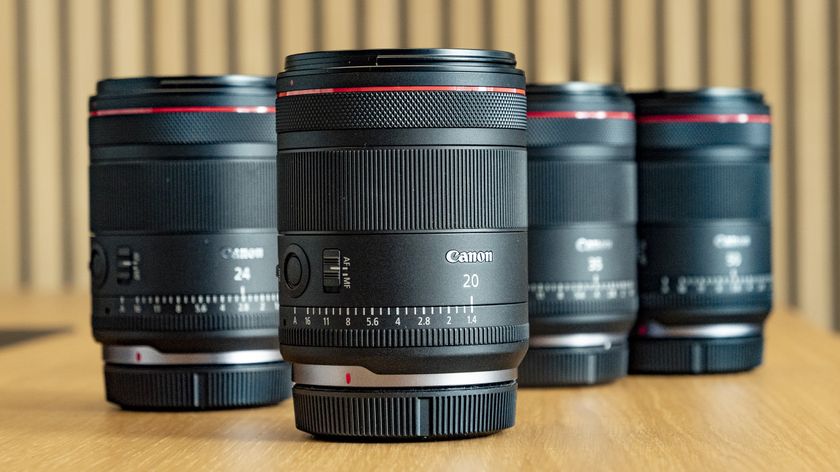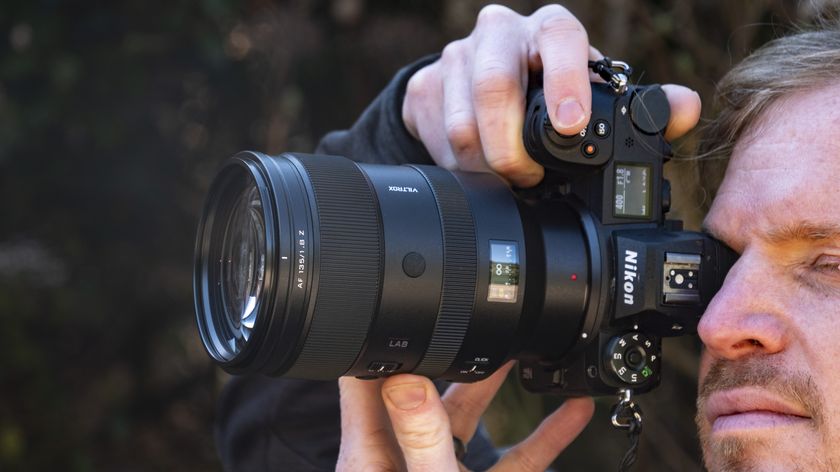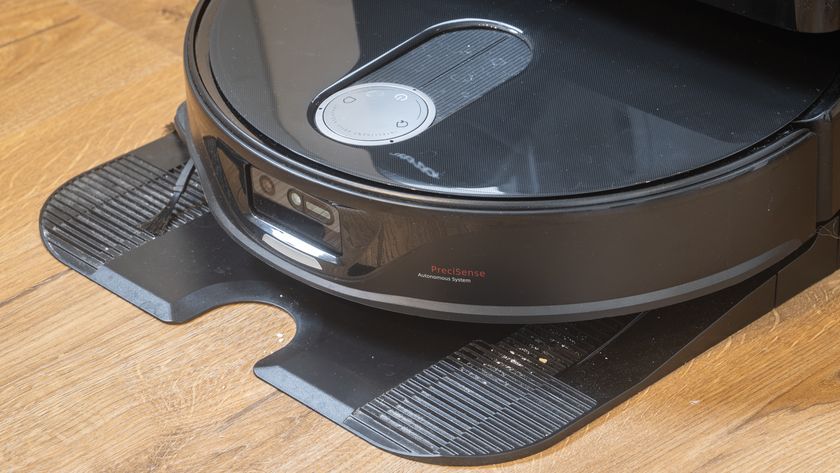Canon's EOS R mirrorless camera range gets its first true macro lens
The new RF 100mm f/2.8L Macro will get you up close and personal

Not only has Canon teased us with the development announcement for the EOS R3, the Japanese camera maker has also added to its RF lens catalog, introducing the first true macro lens for its full-frame mirrorless system.
The RF 100mm f/2.8L Macro IS STM lens will eventually replace the existing EF 100mm f/2.8L Macro lens for Canon's DLSRs, and comes with some nifty tricks up its sleeve.
Headlining that list of tricks is its ability to offer a 1:1.4 reproduction, making it the first macro lens to offer a maximum magnification of 1.4x, with a minimum focusing distance of just 8.6cm.
The only way its EF counterpart can offer the same 1.4x magnification is to attach a the EF25 II extension tube to the lens, while its minimum focusing distance is 11.2cm.


The Canon RF 100mm f/2.8L Macro also features a new control ring on the barrel called the Spherical Aberration (SA) Control Ring, and this adds an extra layer of creative control for the photographer.
While the f/2.8 aperture already offers a shallow depth of field and bokehlicious blurry backgrounds to images, the SA ring can either soften the background further or soften the foreground instead, which could offer some interesting results.
The lens is rated for 5 stops of camera shake compensation which, when combined with a stabilized camera like the EOS R5 or the EOS R6, will give a combined 8 stops of compensation.
Get daily insight, inspiration and deals in your inbox
Sign up for breaking news, reviews, opinion, top tech deals, and more.
Dual Nano USM motors are onboard to promise fast and smooth autofocus performance, and Canon says it boasts improved focus breathing that suppresses the effects of stacking by up to 50% over its EF counterpart.
The Canon RF 100mm f/2.8L Macro IS STM will be available from May 2021 in the UK, and from late July in the US and Australia for $1,399 / £1,479.99 / AU$2,599.
Priming to zoom in
Canon has also announced two pro-level telephoto lenses for the its RF stable, adding a 400mm f/2.8L IS USM and 600mm f/6L IS USM lenses to the ever-growing range of mirrorless glass.
Both fixed-aperture lenses have been designed for those expecting only the best optics that offer excellent results, even in low light. A 9-blade construction offers a circular aperture that, Canon promises, is capable of moving in 1/8th steps for smoother transitions from light and shadow while recording video.




The two telephotos are also stabilized, offering a combined 5.5 stops of stability when paired with a body with IBIS, like the EOS R5 and R6.
Interestingly, Canon says that both lenses will ship with a drop-in screw filter holder with a 52mm protective filter already fixed, while a drop-in circular polarizing filter will be available to purchase as an additional accessory.
Both telephoto primes are compatible with the RF 1.4x and RF 2x extenders for further reach. And, like a lot of Canon's L-series lenses, they're no lightweights – the 400mm weighs in at 2.89kg, while the 600mm is about 3kg.
Catering to the professional market, these are premium lenses with eye-watering prices. If you truly are keen on one or both lenses, they'll be available from June in the UK, while entering the Aussie and US markets a little later in July, for the staggering price of $11,999 / £12,450 / AU$21,999 for the 400mm prime and $12,999 / £13,410 / AU$23,999 for the 600mm lens.
- Best Canon cameras in 2021: the top models in Canon's stable

While she's happiest with a camera in her hand, Sharmishta's main priority is being TechRadar's APAC Managing Editor, looking after the day-to-day functioning of the Australian, New Zealand and Singapore editions of the site, steering everything from news and reviews to ecommerce content like deals and coupon codes. While she loves reviewing cameras and lenses when she can, she's also an avid reader and has become quite the expert on ereaders and E Ink writing tablets, having appeared on Singaporean radio to talk about these underrated devices. Other than her duties at TechRadar, she's also the Managing Editor of the Australian edition of Digital Camera World, and writes for Tom's Guide and T3.












